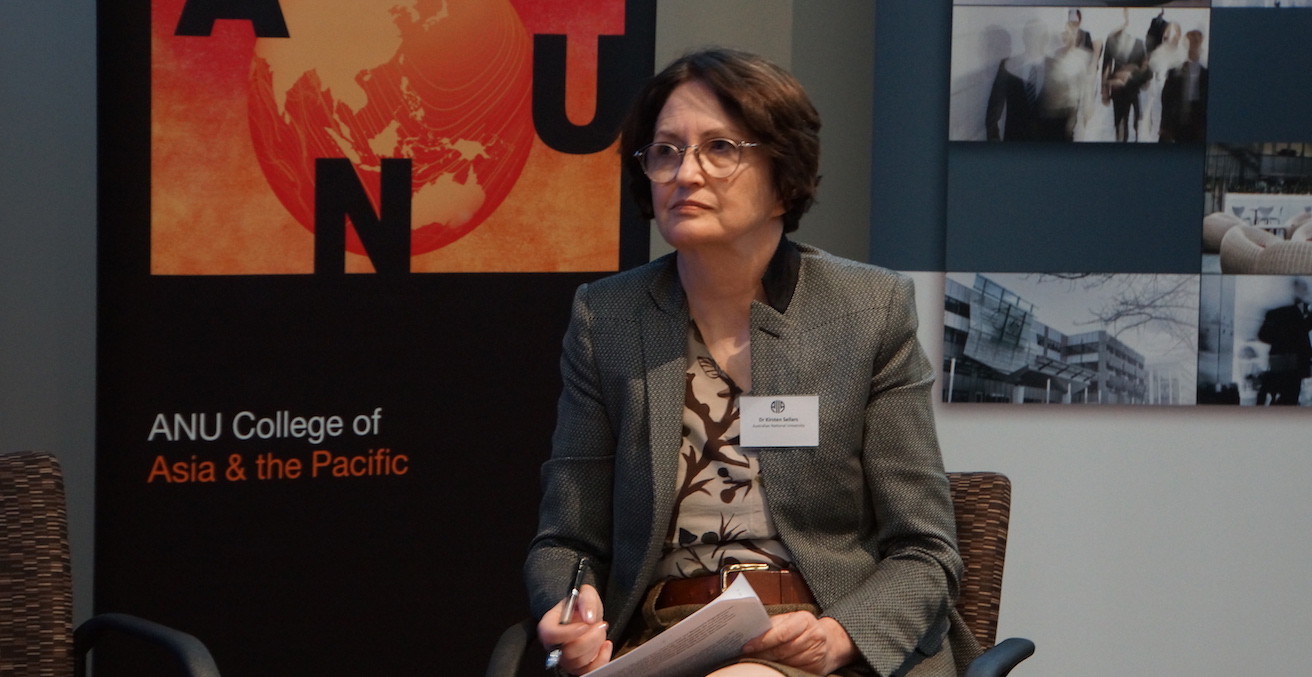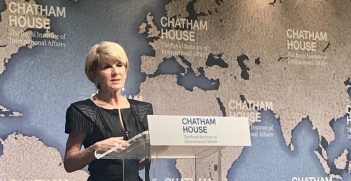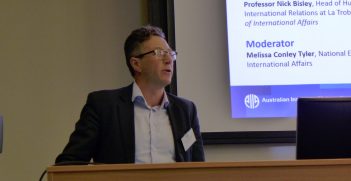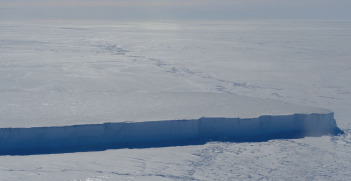Rules or Law? Kenneth Bailey and the Law of the Sea

The rules-based international order is a reaction against the perceived loss of traction of the post-war law-based international order. Australian jurist and diplomat Sir Kenneth Bailey believed that if the law-making process failed, what was required was better law.
We have been given the task of defining the concept of the rules-based international order, but it seems that the more we discuss it, the more it elusive it becomes. All that is clear is that we have not yet met the brief. That being so, we might ask a different question: not what the rules-based international order is, but what it is not.
The rules-based international order is a reaction against the perceived loss of traction of the post-war law-based international order. Law follows order: the American-led order is over; and the treaty-based framework it espoused is losing its purchase. The post-war treaty regime — bookended by its two most ambitious instruments, the UN Charter and the UN Convention on the Law of the Sea — no longer seems to be as appropriate or as effective as it might once have been. In these unsettled times, before the next order creates a new legal regime, it is not surprising that Australia, a middle power, is drawn to the more amorphous and politicised language of rules rather than the more formal and binding strictures of law. The danger, though, is that by advancing rules, Australia further diminishes the validity of the law to which it has contributed so much.
This brings us to Sir Kenneth Bailey, the Australian jurist and diplomat who, as an active proponent of the law-based international order, believed that if the law-making process failed, what was required was better law. In other words, the law begat law, not non-legal rules.
Bailey was well aware that the making of laws, like the making of sausages, is not a pretty sight. For over a quarter of a century, from 1945’s San Francisco Conference on the United Nations to 1971’s Committee on the ‘Principles of International Law concerning Friendly Relations’, he played a significant part in the making of international law, while at the same time chronicling the far-from-pretty process of doing so. His reports are candid, insightful and on occasion wry, especially when recalling the underhand tactics and personal foibles of those involved in some of the harder-fought negotiations.
During his ‘international’ years, Bailey served as Solicitor-General and Secretary of the Attorney-General’s Department (1946 to 1964), Australian High Commissioner to Ottawa (1964 to 1969) and international law advisor to the Attorney-General’s Department and Department of Foreign Affairs (1969 to 1972). Over this period, he made a distinctive contribution to international legal debates, particularly on the law of the sea: a contribution that is less recognised than it should be, especially outside Australia.
As his nation’s representative abroad, he was of course expected to campaign for the position outlined in the departmental brief, and he dutifully chivvied and cajoled others to support the Australian line. But more significantly, Bailey consistently articulated a ‘Western’ position at a time when it was perceived to be under great threat: from the Soviet bloc, from the non-aligned states and from rifts within the Western camp itself. It is back-handed testimony to his effectiveness as an advocate that Soviet and Latin American delegates described him as an ‘extremist’ and even more bluntly, ‘the enemy’.
By the mid-1950s, the Western powers were presented with a fundamental problem: how to successfully negotiate treaties on issues of importance to themselves without being stymied by their non-Western opponents. Their attempt to secure agreement on a fundamental law of the sea question — the breadth of the territorial sea — posed this problem in its starkest form. Should there be a narrow three-nautical-mile territorial sea, applicable to all, which the Western maritime powers claimed was customary international law or could states legitimately extend their territorial seas further out to sea?
The maritime powers wished to retain narrow territorial seas because these gave their navies and merchant and long-distance fishing fleets the greatest freedom of movement on the high seas. The less powerful states, by contrast, sought wider territorial seas as a peacetime buffer against unwanted foreign naval or fishing fleet activities close to their shores, and began to unilaterally claim territorial seas of between four to twelve miles. The maritime powers responded by convening the first post-war law of the sea conference, commencing in February 1958, to call a halt to this ‘jurisdictional creep’.
At this conference, the United States nominated Kenneth Bailey, the head of the Australian delegation, as chair of Committee I, which would deal among other things with the question of the breadth of the territorial sea. This Committee produced a detailed draft treaty, the Convention on the Territorial Sea and Contiguous Zone, which dealt with every relevant issue except the vital question of breadth, on which the members could not agree. The powers reacted to this omission by convening a second conference to resolve this outstanding question (as well as a related question on fishery limits) which was duly convened in March 1960. Again, Bailey headed the Australian delegation and as before, he played a significant role, trimming Western policy positions and drawing the sting from non-aligned proposals. Once again, though, the conference failed to reach a decision. The Western powers had thrown all their resources at the problem, and had exerted every form of pressure, yet were still unable to secure agreement.
Chastened by this experience, Bailey and others recognised that the West faced a significant difficulty: every time they mooted an agreement they were undone, not only by the opposition of the Soviet bloc and the disunity among the Western powers, but also by groups of smaller and newly independent states, which were becoming a force to be reckoned with. Furthermore, the problem posed by the non-aligned states could only get worse: first, because the admission of new UN members in late 1960 after the second conference would tip voting balances even further away from the West; and second, because these states presented the West with problems quite distinct from, and less predictable than, those presented by the Soviets and their satellites.
The Western powers initially responded to this development rather tentatively. The British and Americans, for example, were slow to grasp the implications of the non-aligned states’ legal interpretations of issues such as self-determination: a tendency compounded by their preoccupation with Soviet doctrinal developments. By the early 1960s, however, quiet behind-the-scenes discussions had begun between the Australian, British and American legal advisors about a new approach to the making of international law. They discussed whether resolutions passed with resounding majorities in the General Assembly could contribute to the formation of customary international law (Bailey thought not) or whether the claim to self-determination was a right or a principle (Bailey thought it was a principle). In 1962, at the West’s instigation, the International Law Commission began talks on a draft ‘law of treaties’ with the express intention of drawing the non-aligned states into the codification process. This would culminate in the Vienna Convention on the Law of Treaties, opened for signature in 1969.
At the same time, the Western states began to explore new methods for constructing international agreements, which were usually decided by either a simple majority or a two-thirds majority vote. Unable to achieve these majorities, Western representatives proposed an alternative: agreement ‘by consensus’ on package deals, with voting only as a last resort. The non-aligned nations went along with this, having realised that resolutions passed by overwhelming majorities lacked legal purchase if opposed by the powerful states. Some of the UN negotiations with which Bailey was engaged during his final years abroad, on the ‘Principles of International Law concerning Friendly Relations’ and the ‘Definition of Aggression’, were conducted on these new lines.
Yet this form of decision-making brought new problems in its train, not least that irreconcilable views were now being incorporated into the agreements themselves. As for law of the sea, the third conference opened the year after Bailey’s death in 1972 and closed a decade later, in 1982. It produced the UN Convention on the Law of the Sea, agreed by consensus, that manifested some of these new problems but at least finally answered the thorny question of the breadth of the territorial sea: twelve nautical miles.
Dr Kirsten Sellars is Visiting Fellow at the Coral Bell School of Asia Pacific Affairs, Australian National University.
This article is an edited extract of her remarks prepared for the session “Australia and the Law of the Sea and Maritime Law” at a conference on Australia and the Rules-Based International Order on 18-19 July organised by the Australian Institute of International Affairs, Department of Foreign Affairs and Trade and ANU Coral Bell School with the support of the Attorney-General’s Department.
This article is published under a Creative Commons Licence and may be republished with attribution.





